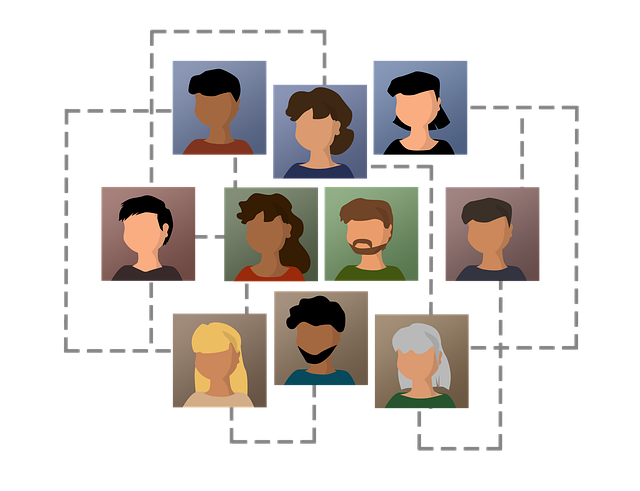Online Tools and Softwares
8 Freemium Team Management Tools and Software to Try
Published
2 years agoon
By
Alan Shapiro

Managing a team is no easy feat. The fact that managers are paid more than their staff speaks of the weight of their responsibility. Even in a small business where the owner typically assumes the role of the manager, the process is just as challenging. After all, you are dealing with people with different temperaments and habits, no matter how few. That is why you need all the help you can get.
Thankfully, there are team management tools and software at your disposal. And they are free to use, too. Here are the top choices for you to explore.
1. Infinity
This team management tool boasts flexibility. So, if that’s one of your top considerations, consider Infinity. Here, flexibility manifests in the tool’s customizability. It can adapt to what your team needs for a given project. Furthermore, it supports app integration via Zapier. That way, you can have all your favorite apps within the same workspace.
Infinity makes collaboration easy via folders, boards, and items, as well. All of these, you can scale up or down to your liking. There are also 20 attributes you can use to further organize your to-dos. Workload navigation becomes stress-free thanks to Infinity.
2. Airtable
This cloud collaboration tool allows you to set a roadmap for the rest of your team. It’s perfect for planning and organizing projects. Within the Airtable workspace, you can sort and filter tasks according to their importance and your preference. That makes workload navigation easy, regardless of the number of to-dos you have on your plate.
Another upside of Airtable is its built-in applications. These include a webpage designer, a scheduler, and an email marketing tool. Moreover, task automation is also possible. Schedule meetings, send requests, approve projects, and process invoices via the software’s automation function.
3. Asana
Asana is a no-nonsense team management tool. With it, you can create and assign tasks and monitor deadlines. In between, you can share images and links necessary for the completion of a project.
Depending on the complexity of a project, you have the option to adjust the interface. Use the list view for simple to-dos. For complicated projects that entail the participation of multiple team members, you can employ the Gantt charts or Kanban boards. As for tracking tasks, you have list, board, or calendar views.
Asana also allows app integration. That means you can use other software essentials within the Asana workspace.
4.ClickUp
This management tool suits teams of all sizes. Whether yours is a large organization or a small startup, you can benefit from ClickUp’s powerful features. These include project planning, task scheduling, task management, and resource allocation, among others.
With ClickUp, collaboration is made easy. You can write and assign comments on posted tasks for asynchronous communication. If those prove insufficient, there’s real-time chat.
On the ClickUp workspace, you can filter, sort, and reorder tasks. Those who have multiple simultaneous projects will benefit from the tool’s easy search feature. Reporting features make post-project analysis more convenient.
5. Slack
This is perhaps one of the most popular team collaboration apps out there—and that’s for obvious reasons. Slack is reliable. It doesn’t hurt that it’s user-friendly, too.
Slack is a chat software that zeroes in on team communication. It has pre-set and random channels you can use to create groups, much like group chats. The app is also customizable should you need it to better suit your organization’s culture.
Slack offers both free service and paid plans. The former is enough for simpler team dynamics. Use it to collaborate with your group via direct messaging and push notifications, among other functions.
6. Basecamp
Basecamp’s key features include brainstorming, collaboration, document management, and calendar management. Those are basically everything you need to efficiently manage a team. On top of those, the tool also boasts helpful features such as customizable templates and live chats.
On Basecamp, you can pitch ideas via the message board. Meanwhile, other team members can comment. Once an idea gets the green light, everyone on the message board gets an update on its progress.
Another striking feature is the schedule manager, which allows automation of events subscriptions and meeting setup.
7. Avaza
It’s easy to confuse Avaza for the more popular Asana. But while it’s less renowned, it definitely has its own merits.
On Avaza, you can create tasks, assign projects, set deadlines, and establish priorities. These core functions are enough to ensure that all your team members are on the same page. If not, they get notifications.
As for viewing tasks, you can choose from simple lists to Gantt charts. These options make way for versatility, catering to a project’s complexity.
Avaza supports invoicing and integrates with Xero and QuickBooks. You can use the tool for free if you have no more than five people on your team.
8. Wrike
This is an award-winning team management tool. It features dashboards, workflows, request forms, and reports. All are customizable. On top of those, you also have resource management and reporting tools you can use to gain advanced insights into the progress of projects.
The Wrike interface is flexible. You can keep it simple with a list view. Or you can opt for Gantt charts or Kanban boards. Whichever template you choose, the home screen is easy to navigate.
Lastly, Wrike boasts 400+ prebuilt integrations, including Google, Dropbox, and Salesforce.
Wrapping Up
Whether managing a remote team an in-house staff, the challenges are more or less the same. From missed deadlines to misunderstood instructions, these roadblocks can slow down your business and make team management more challenging for you.
So, avoid them as much as you can. Be on top of every project by keeping sure that all team members are on the same page.
To help you out, use a team management tool or software that best suits your work style. Take into account your team’s preferred work style, as well. That way, you’re championing a truly collaborative workspace, which is something your team members will surely appreciate.
M. Alan Shapiro is the CEO of Executive Boutique Call Center, an offshore call center and BPO services provider. Since 2008, he has been helping his clients’ companies grow by providing them with high quality and reliable outsourcing services from their two offices in Cebu, Philippines. He spends his free time snowboarding, skiing, mountain biking and gardening.


Online Tools and Softwares
7 Types Of Software That Have Changed Business For The Better
Published
5 hours agoon
May 9, 2024

In the dynamic landscape of modern business, staying competitive often boils down to harnessing the power of technology. Software solutions have emerged as indispensable tools, revolutionizing the way businesses operate, communicate, and thrive. Let’s delve into seven game-changing software types that have reshaped the business landscape.
1. 3PL Management Software: Redefining Logistics Dynamics
Unraveling the Essence
Think of 3PL management software as the conductor orchestrating the intricate symphony of logistics. It’s the digital compass guiding businesses through the labyrinth of supply chain operations, optimizing processes, and amplifying efficiency.
Key Features and Benefits:
- Real-time Insights: Delivers real-time visibility into inventory status, shipment tracking, and order fulfillment, empowering businesses with actionable insights.
- Cost Optimization: By automating logistics processes, this software slashes unnecessary expenses, from warehouse maintenance to transportation overheads.
- Enhanced Scalability: Seamlessly scales with business growth, ensuring logistical operations remain agile and responsive to evolving demands.
- Customer Satisfaction: Ensures timely deliveries, accurate order processing, and seamless returns management, bolstering customer satisfaction levels.
2. Customer Relationship Management (CRM) Software: Crafting Personalized Experiences
Nurturing Customer Connections
CRM software is the virtual handshake that fosters enduring relationships between businesses and their clientele. It’s the digital brain that stores, analyzes, and leverages customer data to tailor personalized experiences.
Key Features and Benefits:
- 360-Degree View: Consolidates customer data into a unified database, providing a holistic view of customer interactions and preferences.
- Lead Cultivation: Nurtures leads through targeted communication, automating lead nurturing processes and driving conversion rates.
- Effortless Collaboration: Facilitates seamless collaboration across sales, marketing, and customer service teams, ensuring a unified approach to customer engagement.
- Actionable Insights: Unveils actionable insights through data analysis, guiding strategic decision-making and optimizing marketing campaigns.
3. Enterprise Resource Planning (ERP) Software: Weaving Operational Cohesion
Synchronizing Business Elements
ERP software serves as the digital spine of modern enterprises, seamlessly integrating core business processes, from finance to supply chain management, into a cohesive ecosystem.
Key Features and Benefits:
- Process Automation: Automates mundane tasks and workflows, liberating employees to focus on value-adding activities and innovation.
- Data Centralization: Centralizes critical business data, fostering collaboration, and facilitating informed decision-making across departments.
- Scalable Architecture: Adapts to business growth and evolution, ensuring scalability without compromising performance or reliability.
- Compliance Assurance: Ensures regulatory compliance and adherence to industry standards, mitigating legal risks and operational hiccups.
4. Project Management Software: Orchestrating Team Synergy
Unifying Project Endeavors
Project management software is the digital command center for collaborative endeavors, enabling teams to plan, execute, and monitor projects with precision and cohesion.
Key Features and Benefits:
- Task Allocation: Assigns tasks, sets deadlines, and tracks progress in real-time, fostering accountability and transparency among team members.
- Resource Optimization: Optimizes resource allocation, ensuring the right people are deployed to the right tasks at the right time.
- Seamless Collaboration: Facilitates seamless communication and file-sharing, eliminating silos and fostering a culture of teamwork and innovation.
- Performance Monitoring: Tracks project KPIs and metrics, enabling stakeholders to identify bottlenecks, mitigate risks, and drive continuous improvement.
5. Human Resource Management (HRM) Software: Navigating the People Terrain
Streamlining HR Operations
HRM software is the digital guardian of the employee lifecycle, simplifying HR processes, enhancing employee engagement, and nurturing talent.
Key Features and Benefits:
- Efficient Recruitment: Automates recruitment workflows, from job posting to candidate evaluation, streamlining the hiring process and improving candidate quality.
- Onboarding Excellence: Streamlines onboarding processes, ensuring new hires are seamlessly integrated into the organization and set up for success.
- Payroll Precision: Automates payroll calculations, tax deductions, and compliance reporting, minimizing errors and ensuring timely and accurate payments.
- Performance Empowerment: Facilitates performance evaluations and goal-setting, fostering employee development, and driving organizational growth.
6. Financial Management Software: Balancing Fiscal Fortunes
Mastering Financial Dynamics
Financial management software is the digital steward of fiscal health, empowering businesses to track expenses, manage budgets, and navigate financial complexities with ease.
Key Features and Benefits:
- Expense Oversight: Tracks expenses across categories, providing insights into spending patterns and identifying cost-saving opportunities.
- Invoicing Efficiency: Generates invoices, tracks payments, and streamlines billing processes, ensuring prompt payments and healthy cash flow.
- Budgetary Wisdom: Enables budget creation, forecasts revenue, and monitors variances, empowering proactive financial planning and decision-making.
- Regulatory Compliance: Ensures compliance with tax regulations and accounting standards, safeguarding businesses from legal and financial repercussions.
7. Marketing Automation Software: Amplifying Brand Outreach
Energizing Marketing Initiatives
Marketing automation software is the digital maestro orchestrating brand outreach efforts, automating marketing campaigns, and nurturing leads to drive conversion and engagement.
Key Features and Benefits:
- Targeted Campaigns: Delivers personalized content and offers based on customer behavior and preferences, enhancing engagement and conversion rates.
- Social Media Mastery: Manages social media presence, schedules posts, and analyzes performance metrics to optimize social media marketing strategies.
- Lead Nurturing: Guides leads through the sales funnel with automated workflows, delivering timely and relevant content to drive conversions.
- Data-driven Insights: Provides actionable insights through analytics and reporting, enabling marketers to refine strategies and maximize ROI.
In essence, software solutions have emerged as the cornerstone of modern business operations, empowering organizations to adapt, innovate, and thrive in an ever-evolving landscape. From logistics optimization to customer engagement, each software type plays a pivotal role in shaping the future of business, driving growth, and fostering success.
Online Tools and Softwares
From Scheduling to Tracking: The Essentials of Effective Courier Software
Published
5 months agoon
December 21, 2023

In a world that moves at the speed of a click, efficient courier services have become the unsung heroes of our daily lives. Whether it’s a last-minute birthday gift or a crucial business document, the reliability of courier services is paramount. What makes these services seamlessly weave into our fast-paced lives? It’s the magic of effective courier software.
Unraveling the Basics: What is Courier Software?
Courier software is the wizard behind the curtain, orchestrating the intricate dance of parcels and packages from sender to recipient. It’s the digital brain that powers the logistics, ensuring that your package doesn’t take an unexpected detour to Timbuktu. Think of it as the GPS for your parcel’s journey.
But how does it all work?
Imagine a world where every courier company relies on handwritten notes and manual scheduling. Chaos, right? Cloud-based transport software eliminates this chaos, streamlining the entire process from order placement to final delivery.
Seamless Scheduling: The Heartbeat of Courier Operations
At the core of every successful courier service lies a well-oiled scheduling system. This is where the magic begins. Instead of scribbled notes and messy calendars, sophisticated courier software automates and optimizes the scheduling process. It’s the difference between sending your parcel on a scenic route versus the fastest highway.
Why does scheduling matter?
Efficient scheduling ensures that your parcel takes the most direct route to its destination. It minimizes delays, reduces fuel consumption, and, most importantly, ensures your package arrives on time. Courier software takes the headache out of logistics, making sure your parcel is on the move when it needs to be.
Real-Time Tracking: A Game-Changer for Both Senders and Recipients
Remember the days of nervously pacing around, waiting for the doorbell to ring with your awaited package? Those days are long gone, thanks to real-time tracking provided by cutting-edge courier software.
How does it work?
Every step of your package’s journey is tracked and updated in real time. From the moment it leaves the sender’s hands to the triumphant knock on your door, you can follow its journey on your smartphone or computer. It’s like a virtual companion for your parcel.
Customer Communication: Keeping You in the Loop
Courier software doesn’t just stop at tracking. It excels in keeping you informed. Imagine receiving a friendly notification on your phone, letting you know your package is out for delivery. It’s like a digital pen pal keeping you company throughout the delivery process.
Why is communication key?
In a world where information is king, keeping customers in the loop builds trust. It transforms a seemingly anonymous courier service into a reliable partner. Whether your package is delayed due to unexpected weather or it’s just a few blocks away, transparency in communication is the key to customer satisfaction.
The Human Touch in a Digital World
In the era of algorithms and automation, it’s easy to forget the human touch. Courier software, while incredibly efficient, is not devoid of humanity. It’s the people behind the screens who ensure that your parcel is handled with care and reaches its destination safely.
Who are the unsung heroes?
From the meticulous hands that pack your parcel to the friendly faces that deliver it to your doorstep, there’s a human touch at every stage. Courier software simply enhances their capabilities, making the entire process smoother and more reliable.
Choosing the Right Courier Software: A Guide for Businesses and Individuals
Now that we’ve unveiled the importance of effective courier software, how do you choose the right one for your needs? It’s like finding the perfect pair of shoes – it has to fit just right.
Consider these factors:
- User-Friendly Interface: The best courier software is like a good friend – easy to understand and reliable. Look for a user-friendly interface that doesn’t require a PhD in logistics to navigate.
- Scalability: Whether you’re a small business sending a handful of parcels or an enterprise managing a plethora of shipments, choose software that grows with you.
- Integration Capabilities: A seamless experience requires integration. Ensure that your chosen courier software plays well with other tools and platforms you use.
- Real-Time Tracking Features: The heart of modern courier services lies in real-time tracking. Ensure that the software you choose provides accurate and timely updates for both senders and recipients.
The Final Mile: Wrapping Up the Parcel and the Post
In the grand symphony of logistics, courier software is the conductor, ensuring that every note is played to perfection. From scheduling to real-time tracking, it’s the backbone of a reliable and efficient courier service.
So, the next time you receive a package at your doorstep, take a moment to appreciate the invisible hands and the digital wizardry that made it all possible. It’s not just about parcels; it’s about connections, reliability, and the human touch in a digital world. Cheers to the unsung heroes of the courier service – may your journeys always be swift and your deliveries, always on time.
Online Tools and Softwares
Top 7 HRM tools every Human Resource Manager should explore
Published
1 year agoon
March 30, 2023

There are a variety of human resource management (HRM) tools available, each with its own unique features and benefits. In this article, we have covered seven popular HRM tools that organizations often use.
All these tools are cloud-based human resource management (HRM) tools that are designed to help organizations manage all aspects of HR management, including payroll, benefits, recruitment, talent management, and more. These tools have gained significant popularity in recent years due to their user-friendly interface, advanced features, and scalability. In this article, we will also discuss how to use them effectively.
All the below HRM tools offer several benefits to organizations, including:
- Cost Savings: They can help organizations save money by reducing the time and resources required for HR management tasks.
- Accessibility: They are cloud-based tools, which means that users can access them from anywhere with an internet connection. This makes it ideal for remote workforces.
- Compliance: They are designed to help organizations stay compliant with labor laws and regulations, reducing the risk of costly penalties and lawsuits.
- Scalability: They are designed to scale with organizations as they grow, making them an ideal tool for small and medium-sized businesses that are looking to expand.
To start using these tools, organizations must first purchase a license and complete the setup process. For most of these tools, this involves defining user roles, configuring security settings, and setting up integrations with other HR systems. Once the setup process is complete, users can log in to the platforms and access their features through the main dashboard.
One of the key benefits of using the below tools is their user-friendly interface, which is designed to be intuitive and easy to navigate. These platforms are organized into modules, which can be accessed through their main menus on the dashboard. Users can also customize their dashboard to show the modules and reports they use most frequently.
Workday
Features of Workday
Some of the key features of the tool include:
- Human Capital Management: This module provides core HR features such as employee data management, time and attendance tracking, and benefits administration.
- Recruiting: This module is designed to help organizations manage the entire recruiting process, from creating job postings to conducting interviews and making job offers.
- Talent Management: This module provides tools to help organizations manage employee development and performance, including goal setting, performance reviews, and succession planning.
- Payroll: This module provides comprehensive payroll management features, including tax compliance, payroll processing, and reporting.
- Time and Absence Management: This module provides features to help organizations track employee time and attendance, manage time-off requests, and enforce time and attendance policies.
BambooHR
Features of BambooHR
Some of the key features of the tool include:
- Applicant Tracking: This module is designed to help organizations manage the entire recruiting process, from creating job postings to conducting interviews and making job offers.
- Onboarding: This module provides tools to help organizations onboard new hires, including setting up new hire paperwork and conducting orientation training.
- Employee Data Management: This module provides core HR features such as employee data management, time and attendance tracking, and benefits administration.
- Performance Management: This module provides tools to help organizations manage employee development and performance, including goal setting, performance reviews, and succession planning.
Conclusion
BambooHR is a powerful HRM tool that offers a wide range of features to help organizations manage all aspects of HR management. To use BambooHR effectively, organizations should define user roles, customize dashboards, train users, and use data analytics. BambooHR offers scalability, accessibility, and security.
ADP
ADP is one of the most popular HRM tools on the market, with over 700,000 clients worldwide.
Getting Started with ADP
Features of ADP
Some of the key features of the tool include:
- Payroll Processing: ADP offers comprehensive payroll processing features, including tax filing, direct deposit, and wage garnishment.
- Benefits Administration: This module provides tools to help organizations manage employee benefits, including enrollment, plan administration, and compliance tracking.
- Time and Attendance Tracking: This module provides tools to help organizations track employee time and attendance, including time tracking, leave management, and overtime tracking.
- Talent Management: This module provides tools to help organizations manage employee development and performance, including goal setting, performance reviews, and succession planning.
Oracle HCM Cloud
Features of Oracle HCM Cloud
Oracle HCM Cloud offers a wide range of features to help organizations manage all aspects of HR management. Some of the key features of the tool include:
- Talent Acquisition: Oracle HCM Cloud provides tools to help organizations manage the entire talent acquisition process, including job requisitions, applicant tracking, candidate screening, and offer management.
- Payroll Processing: Oracle HCM Cloud offers comprehensive payroll processing features, including tax filing, direct deposit, and wage garnishment.
- Benefits Administration: This module provides tools to help organizations manage employee benefits, including enrollment, plan administration, and compliance tracking.
- Performance Management: Oracle HCM Cloud provides tools to help organizations manage employee performance, including goal setting, performance reviews, and succession planning.
Oracle HCM Cloud is a powerful HRM tool that offers a wide range of features to help organizations manage all aspects of HR management.
SAP SuccessFactors
Features of SAP SuccessFactors
Some of the key features of the tool include:
- Talent Management: SAP SuccessFactors provides tools to help organizations manage the entire talent management process, including recruitment, performance management, learning and development, and succession planning.
- Payroll Processing: SAP SuccessFactors offers comprehensive payroll processing features, including tax filing, direct deposit, and wage garnishment.
- Benefits Administration: This module provides tools to help organizations manage employee benefits, including enrollment, plan administration, and compliance tracking.
- Performance Management: SAP SuccessFactors provides tools to help organizations manage employee performance, including goal setting, performance reviews, and succession planning.
Zenefits
Features of Zenefits
Some of the key features of the tool include:
- Onboarding: Zenefits provides tools to help organizations manage the onboarding process for new hires. This includes digital offer letters, online forms, and e-signature capabilities.
- Payroll Management: Zenefits offers comprehensive payroll management features, including automatic tax filings, direct deposit, and wage garnishment.
- Benefits Administration: This module provides tools to help organizations manage employee benefits, including enrollment, plan administration, and compliance tracking.
- Time and Attendance Management: Zenefits provides tools to help organizations manage employee time and attendance, including time tracking, PTO requests, and scheduling.
Conclusion
Zenefits is a powerful HRM tool that offers a wide range of features to help organizations manage all aspects of their HR operations. To use Zenefits effectively, organizations should customize their company policies, train users, use integrations, and use data analytics. Zenefits offers several benefits to organizations, including cost savings, accessibility, compliance, and scalability.
UltiPro
Features of UltiPro
UltiPro offers a wide range of features to help organizations manage all aspects of their HR operations. Some of the key features of the tool include:
- Payroll Management: UltiPro provides comprehensive payroll management features, including automatic tax filings, direct deposit, and wage garnishment.
- Benefits Administration: This module provides tools to help organizations manage employee benefits, including enrollment, plan administration, and compliance tracking.
- Time and Attendance Management: UltiPro provides tools to help organizations manage employee time and attendance, including time tracking, PTO requests, and scheduling.
- Performance Management: UltiPro offers a range of tools to help organizations manage employee performance, including goal setting, performance reviews, and feedback management.
- Recruitment and Onboarding: UltiPro provides tools to help organizations manage the recruitment and onboarding process, including job postings, candidate tracking, digital offer letters, online forms, and e-signature capabilities.
These were some of the most powerful HRM tools that offer a wide range of features to help organizations manage all aspects of their HR operations. Which tool do you use in your company?


Mappable launches Neurogeocoder API to revolutionize mapping solutions for UAE businesses


Data-Driven Decisions: How Technology is Rapidly Improving Construction Efficiency


7 Types Of Software That Have Changed Business For The Better
Saad Kassis Mohamed led WeCare Raises $350000 for Lab-Grown Diamonds
UK-based fintech Nuke From Orbit raises £500k pre-seed funding to deliver smarter smartphone security
Japanese Fintech Leader Smartpay, partners with Chubb Insurance to accelerate digitization of the Japanese Insurance Industry, Anticipated to Surge to 80 Trillion Yen (USD $500 Billion) by 2027
Trending
-



 How to7 years ago
How to7 years agoHow to register a Startup in USA
-
Interview5 years ago
An Interview with Joel Arun Sursas, Head of Clinical Affairs at Biorithm, Singapore
-



 More4 years ago
More4 years ago6 Promising Up and Coming Fashion Companies
-



 More6 years ago
More6 years agoFactors to Consider When Planning Your Office Design and Layout
-



 Interview4 years ago
Interview4 years agoAn Interview with Russell Jack, Southland-based Yogapreneur and Mindfulness Teacher
-



 Other Internet Tech6 years ago
Other Internet Tech6 years agoHow to become an IPTV reseller? A beginner’s guide
-



 More6 years ago
More6 years agoIPTV business for beginners
-



 Business Ideas6 years ago
Business Ideas6 years ago50 Small Business ideas with low investment


